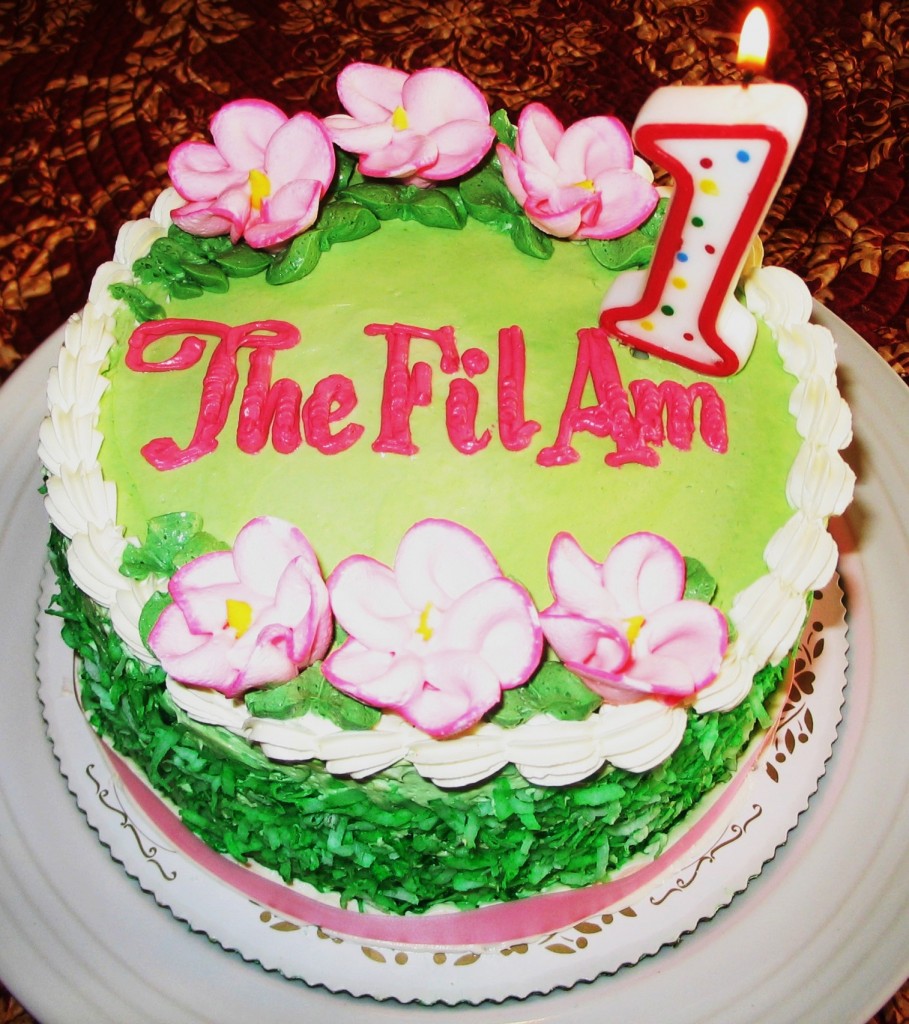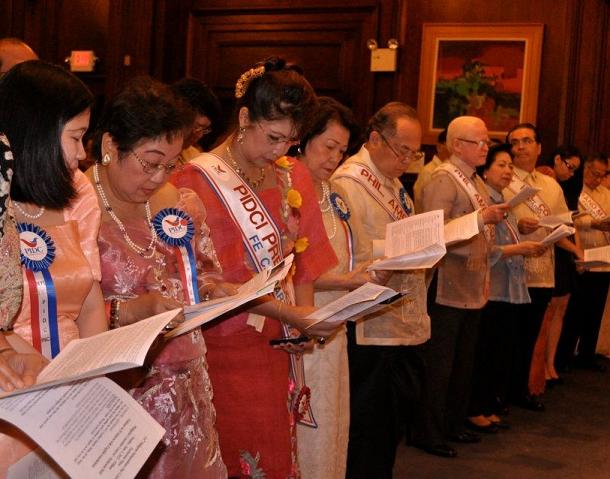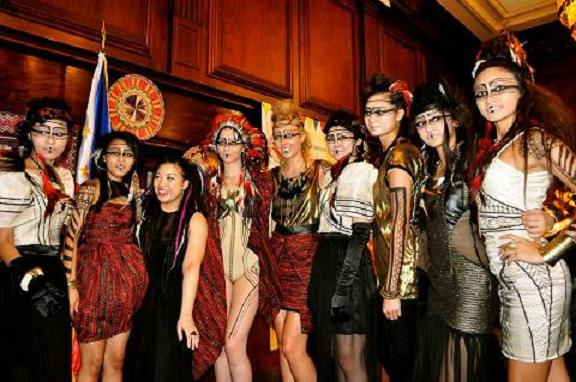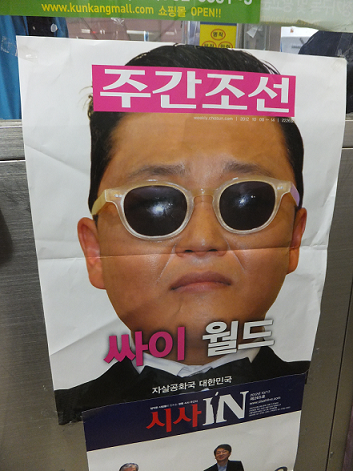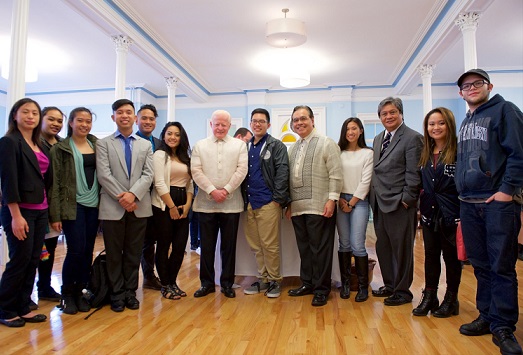Will the butterfly sleeves ever wing their way into haute couture?
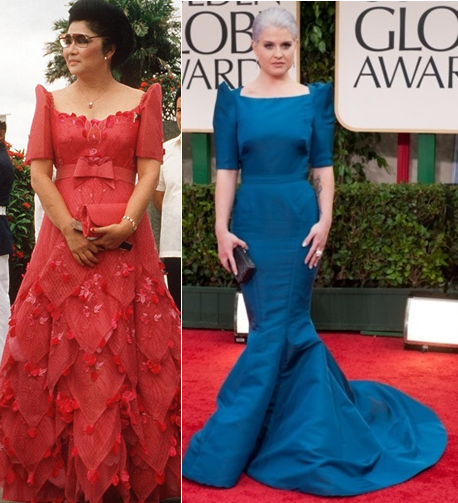
Imelda Marcos in the 1980s; a terno sighting at the Golden Globe with Kelly Osbourne wearing a Zac Posen design.
Clearly, what stole the show at the Independence Day Parade were neither the showbiz celebrities nor the posturing politicians. It was the procession of brightly colored Filipiniana ternos with cascading skirts and boxy, in your-face butterfly sleeves.
Typically associated with Imelda Marcos, many variations of the terno were worn proudly at the June 7 parade by Filipino women representing different generations and social status. Theater actresses, teachers, diplomatic wives, domestic workers, and a U.S. federal judge dressed in their ternos to promote patriotic pride during the 117th Independence Day parade. Which makes me wonder if they knew the terno, worn by the native women when Spain ruled the country, was older than the Philippine republic.
While the terno is widely admired in the community because of its intricate beadwork, its shape-fixer of a bodice, and the versatile meshing of texture from silk to sheer to sequined, it has yet to find a rack on Fifth Avenue. It has remained within the category of “ethnic” clothing, and often sold online as a “cultural costume.”
Unlike the Japanese kimono, the Chinese cheongsam or the Indonesian sarong, which have found Western equivalents in the couture collections of Alexander McQueen, for instance, Tom Ford or Karl Lagerfeld, the Philippine terno has yet to cross over. Even the Mao suit has been given a modern restyling by Vivienne Tam. There have been attempts by Zac Posen and Badgley Mischka to reinterpret the terno, but they hardly moved the fashion needle.
Is fashion dictated by geopolitics or simply by what’s beautiful and wearable. Is the Filipiniana terno with its butterfly sleeves not beautiful enough?
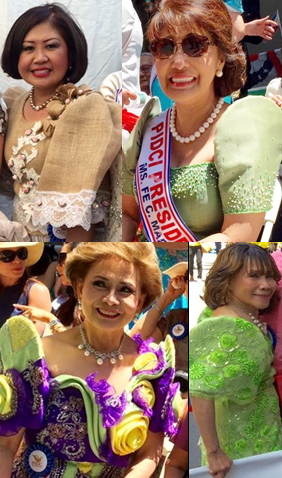
The terno and its butterfly sleeves turn heads at the recent Independence Day parade. Photos by Elton Lugay
In earlier times, the terno did not have the richly elegant look that we know it today. It wasn’t even called the terno. According to the research from the Southeast Asian Studies at the Northern Illinois University, the terno evolved from a four-piece ensemble called baro’t saya (blouse and skirt): “Traditionally, it consisted of four parts — the ‘camisa’ (a short blouse with sleeves), the ‘alampay’ or ‘pañuelo’ (a type of shawl worn over the ‘camisa’), the ‘saya’ (a long skirt), and the ‘tapis’ (a short overskirt wrapped around the ‘saya’).”
The terno, would acquire more refinements over the years. For instance, some women discarded the ‘tapis’ because this piece of clothing was associated with the servants. The Spanish rulers also insisted on modesty in women’s clothing. Instead of a blouse and skirt, the terno became one full-length dress to cover the waist.
In the 1940s, designer Ramon Valera took another look at the Spanish-era terno and made it more contemporary. He exaggerated the butterfly sleeves for a flashier style and accent.
New York lifestyle journalist Kristina Rodolfo said she loves the terno and admires modern variations of it.
“While I don’t own a Filipiniana terno myself I would definitely wear one for cultural celebrations,” said Rodulfo, formerly a fashion blogger at Style Bistro. “I think the voluminous sleeves look too traditional to be worn day-to-day in my wardrobe. They are also typically reserved for formal events so I guess that is why they haven’t caught on.”
Marketing executive Grace Labaguis is a terno wearer and has quite a collection created by noted designers in Manila and New York.
“I find the terno beautiful, classy and elegant, delicate and very feminine,” she said. “I own a few — from the classic one with the butterfly sleeves, wraps made of banana fibers and Maria Clara inspired gowns. I take pride wearing them especially at community events, and during Philippine Independence Day celebrations.”
Some resistance to the terno persists to this day from FilAms who find it “too expensive” or refuse to wear it because “I don’t want to look like a senior citizen” or “I will not wear the dress of Imelda Marcos.”
The terno is a lovely dress, theatrical, wearable, and versatile, despite its unfortunate past being linked to a scorned woman in history.

